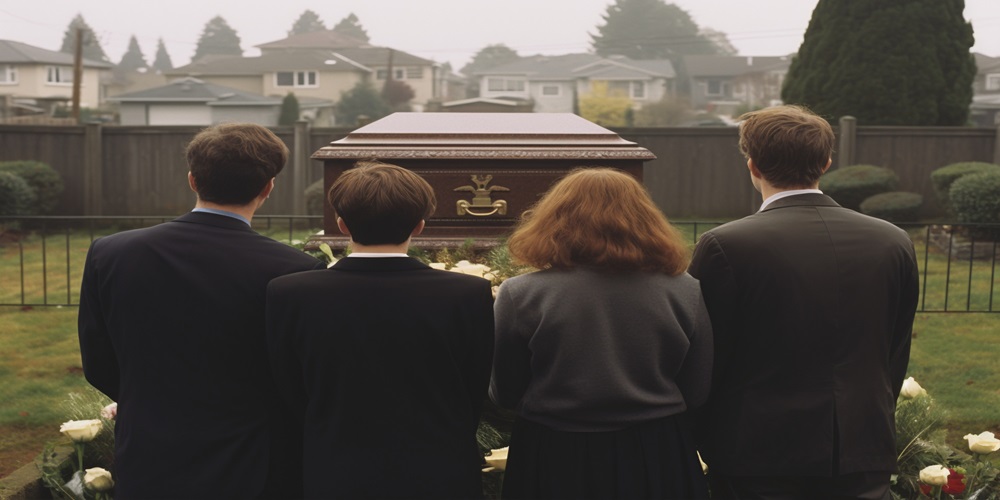Funeral parlours are unique places that people visit to say goodbye to their dead loved ones. Funeral homes come in various shapes and sizes, identical to houses. Examining the different appearances of funeral homes may help us understand how people from various times and cultures have modified our memory and respect for the dead. Here are six types of funeral homes:

1. Gothic Revival
Think of a scary castle seen in movies with tall pointed windows and maybe even some carved stone creatures on the roof; that is more or less what Gothic Revival buildings look like.
This style was trendy back then, approximately from the 1880s until the 1920s. These funeral homes were constructed this way to feel massive, significant, peaceful, and respectful. This is what sets them apart:
Pointed arches
These arched tops are pointy-shaped such that they resemble a triangle laid on its side.
Stained glass windows
These are big, beautiful windows made up of stained-coloured pieces of glass put together to show pictures or designs. Sometimes, they can even tell stories from the Bible.
Gargoyles
They were creepy carved stone figures you would see on some old buildings. Those are gargoyles that were originally used to drain rainwater when it rained.
2. Victorian
Victorian funeral homes appear fancy and adorned. The time’s dwellers, called Victorians, were greatly interested in death; hence, lots of effort was put into building massive burial grounds. Why these structures were unique:
Gingerbread trim
This decoration resembles delicate woodwork on a gingerbread cookie, making it look unique.
Turrets
Small towers sticking out above a roofline resemble little castles atop the building.
Widow’s walks
Flat portions with railings along roofs; during that time, widows could go up there to watch out for ships returning from sea, hoping their husbands might still be alive.
3. Art Deco
Funeral homes of Art Deco imitate the styles from the 1920s and 1930s. This was a period when things appeared sleek and modern, with lots of fantastic shapes and bright colours. Even if this is where people come to bid farewell, funeral homes in such a style reflect this contemporary feeling. This is what sets them apart:
Geometric shapes
Imagine circles, squares, triangles, and zigzags neatly featured on walls or windows.
Streamlined forms
For instance, Art Deco funeral parlours may have doors or windows which do not look boxy but rather curved and smooth.
Bold colours
These funeral homes were sometimes painted in bright colours like turquoise, red or gold on the walls or trims. It was never dull at all.
4. Mid-Century Modern
Most of these architectural designs were there in the 1950s. This is the time when everything was made to look clean and airy. This was done by adding many open spaces and large windows. That’s kind of how this type of funeral home with this design looks. This style reveals a more straightforward mindset towards funereal houses. What makes them unique?
Clean lines
Rather than having plenty of fancy curves or decorations on the outside façade, these buildings have straight lines and appear simple.
Open floor plans
Very few walls divide interior spaces; this results in an open and airy feel.
Natural light
The big windows let in lots of sunlight, making the inside appear bright and cheerful.
5. Contemporary
Nowadays, contemporary funeral homes are made to be comfortable, user-friendly, and peaceful. Just imagine a building done recently with considerable windows to allow in much light and clean air. They might use materials that one could quickly come across in nature, such as wood or stone, which makes it more peaceful. Some contemporary funeral homes may even include a water fountain or something similar to enhance serenity.
6. Green
Green funeral homes sound like eco-friendly places where you can bid farewell to someone you love. Consequently, they have become famous because some people wish for earth preservation even during mourning. Here is how these places are different:
Sustainable materials
To construct these funeral homes, they use things that do not harm the environment, e.g., recycled wood or bamboo instead of regular wood.
Energy-efficient practices
They also try to save energy. Using unique lights that don’t consume too much power can be part of energy-saving measures. However, it also means keeping your window facing the right direction regarding weather regulations, especially during summer and winter.
Conclusion
The structures carry tales from the past and provide a place for memories and honour. These unique buildings hold past stories and provide a place for remembrance and respect. You could also contact funeral services if you want to know more about this topic.